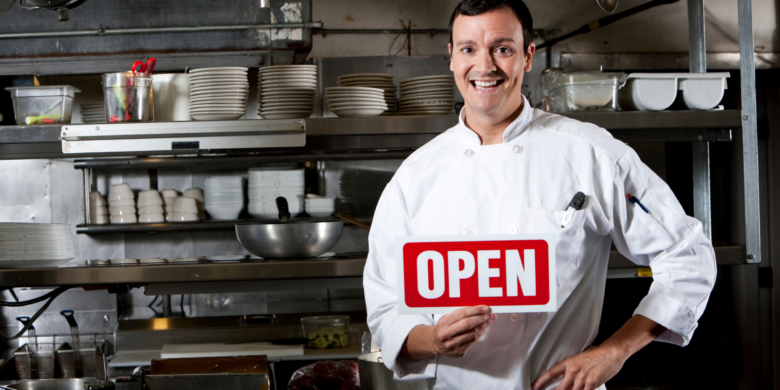
Author: Tammy Maguire, Director of Financial Services, CironeFriedberg, LLP
On March, 11, 2021 the President signed The American Rescue Plan Act which includes a grant program specific to one of the hardest hit industries, restaurants. The Restaurant Revitalization Fund (RRF) is a $28.6B program focused on providing grants to restaurants to provide them with relief related to pandemic-related revenue losses. The Small Business Administration (SBA) has issued sample applications for businesses to start preparing for when applications will be accepted. Timing for when applicants can apply is still to be determined. Click here to see a sample of the application on the SBA website.
When the program opens for applicants, there will be priority in how the funds are awarded. During days 1 – 21, the SBA will only distribute awards to small businesses owned by woman, veterans, or socially and economically disadvantaged individuals. On days 22 through end of the program, the SBA will then distribute remaining funds in the order the application were received until funding runs out.
There will be 3 ways in which applicants can apply for the RRF:
- Through a recognized SBA Restaurant Partner
- Through SBA directly at restaurants.sba.gov
- Via phone 844-279-8898
Businesses will want to consider the following regarding the RRF prior to applying:
- Funding request must be greater than $1,000.
- Funding is limited to $5M per location; not to exceed a total of $10M.
- Must have 20 or fewer locations.
- If an applicant has an outstanding Paycheck Protection Program application, they should withdraw the application.
- All funds must be used for eligible expenses incurred from February 15, 2020 – March 11, 2023
- If a business is unable to use all of the funds by March 11, 2023, they will need to return an unused funds.
- On December 31, 2021, the applicant will be required to report through a portal how much of their RRF is used within each eligible category.
- Annual reporting will be required until the funds are fully utilized.
- At the time of application the applicant must make good faith certifications to the following:
- Current economic uncertainty makes this funding request necessary to support the ongoing or anticipated operations of the Applicant.
- The Applicant does not have a pending application for and has not received a Shuttered Venue Operator grant from the SBA.
The sample applications noted previously have helped to shed light on the calculation for funding. There will be three calculations depending on when your business started operations.
Calculation #1 – for businesses in operation (making sales) prior to January 1, 2019.
- Gross receipts from 2019 Federal Tax Return.
- Subtract 2020 gross receipts as reported or to be reported on the 2020 Federal Tax Return.
- If using a designated SBA point-of-sale restaurant partner, use the gross receipts from the designated point-of-sale partner.
- Subtract aggregate PPP funding received (First and Second Draw).
- Amounts repaid on or before May 18, 2020 can be excluded.
- If the net result is more than $5M per location reduce to $5M and the aggregate of all affiliates cannot exceed $10M.
Calculation #2 – for businesses in operation (making sales) partially through 2019. Businesses in this category may choose between calculation #2 or calculation #3 at their discretion.
- Calculate annualized 2019 gross receipts:
- Start with gross receipts on the 2019 Federal Tax return.
- Determine 2019 monthly average * 12.
- Follow steps 2-4 in calculation #1.
Calculation #3 – for businesses that began operations on or between January 1, 2020 and March 10, 2021; and business that have not yet opened for sales but as of March 11, 2021 have incurred eligible expenses.
Step 1. Start with the total amount spent on eligible expenses incurred between February 15, 2021 and March 11, 2021. Eligible expenses are:
- Payroll
- Principal and interest payments on a mortgage – not including prepayment of principal
- Rent – not including prepayments
- Business debt service
- Utilities for services that began prior to March 11, 2021
- Business maintenance expenses including construction for outdoor seating
- Supplies including payments for PPE and cleaning supplies
- Food and beverage – in line with normal business activity
- Covered supplier cost essential to operations made prior to receipt of Restaurant Relief Funds received
- Operational expenses – normal business operations necessary and mandatory for business (rent, equipment, supplies, inventory, accounting, training, legal, marketing, insurance, licenses, fees). Costs outside of the normal day to day company activities would be excluded.
Any past-due expenses are eligible if they were incurred prior to Feb 15, 2020 and ending March 11, 2023.
Step 2. Subtract 2020 and 2021 (through March 11, 2021) gross receipts to be reported on the Federal tax return.
- If using a designated SBA point-of-sale restaurant partner, use the gross receipts from the designated point-of-sale partner.
Step 3. Follow steps 3-4 in Calculation #1.
Required Documentation
The SBA will require verification of gross receipts in which the applicant can choose one of the following based on their tax return – or other sources:
- Business tax returns (IRS Form 1120 or IRS Form 1120-S);
- IRS Form 1040 Schedule C; IRS Form 1040 Schedule F;
- For a partnership; IRS Form 1065 (including K-1);
- Bank statements;
- Externally or internally prepared financial statements such as Income Statement or Profit and Loss Statements;
- Point of sale report(s).
For additional information on this topic, read Tammy Maguire’s article, Restaurant Revitalization Fund – Are You Ready?
Click here to receive our monthly newsletter to receive timely updates and important information affecting your business and taxes.
If you need assistance or have any questions on the information in this article, please call your CironeFriedberg professional. You can reach us by phone at (203) 798-2721 (Bethel), (203) 366-5876 (Shelton), or (203) 359-1100 (Stamford), or email us at info@cironefriedberg.com.




